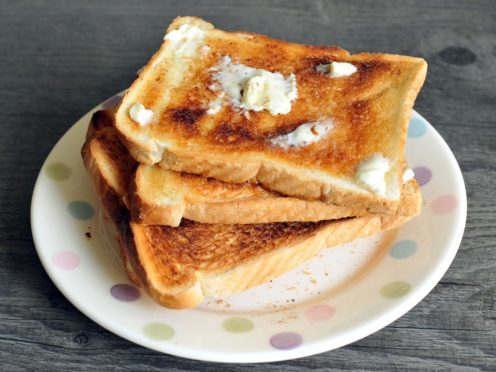Healthier white bread and personalised food could be two outcomes from ground-breaking nutrition research being undertaken by UK scientists.
A team at the Norwich-based Quadram Institute, formerly the Institute of Food Research, is looking at ways of modifying starch so that it is digested more slowly.
The end result could be nutritious white bread that is less likely to fuel obesity and Type 2 diabetes.
In the longer term future work being carried out by the scientists could lead to “personalised food” for people with different nutrition needs.
Lead scientist Professor Richard Mithen said wheat, a major source of starch, provides a fifth of all the calories consumed in the world.
Wheat starch in white bread and potatoes was rapidly digested, causing a big sugar spike that the body struggled to cope with.
Quick digestion also meant it failed to reach the lower intestine, where chemical signals are released telling the body it is full.
In addition rapidly digested starch was not feeding beneficial gut bacteria.

“Wheat starch is the basis of all those fast foods,” said Prof Mithen.
“So we have a very extensive programme to look at how we can make subtle changes to the starches in wheat so we can slow up that digestive process.”
Both white and wholemeal bread contain starch, but white bread has a higher “glycaemic index” meaning it is digested more quickly.
Despite changes in dietary habits, demand for white bread still outstrips that for wholemeal bread.
“We really need to do something about the burger bun,” said Prof Mithen.
He explained that starch molecules in white bread and potatoes were highly branched, which made them easier to digest.
“We’re looking at ways where we can have starch in a diet but it can be more slowly digested,” said the professor.
“One way you can do that is instead of having starch very branched, you have it much more linear. That means when you eat it it’s digested much more slowly.
“Hopefully it would be just as delicious as you want bread to be.
“When you ate it it may make you feel full a little bit quicker. You wouldn’t get that big glucose rush after eating it.”
He thought the healthier wheat starch could be created through plant breeding rather than genetic engineering. Certain wheat strains contained the more linear starch.
Finding ways to alter the speed at which food is digested could open the door to personalised nutrition, said Prof Mithen.
The elderly needed to digest food more quickly than young people, while athletes might benefit from rapid energy bursts and muscle-building nutrients.
Prof Mithen also expected foods to be designed around helping people with chronic diseases such as cancer and diabetes.
He said: “It’s not going to happen overnight but in 20 years time I expect there will be many more food products.
“If you’re at risk of diabetes, if you’re this or if you’re that, maybe this is better for you or whatever.
“The science is very difficult and long term. It will work for some people and not for others.”
